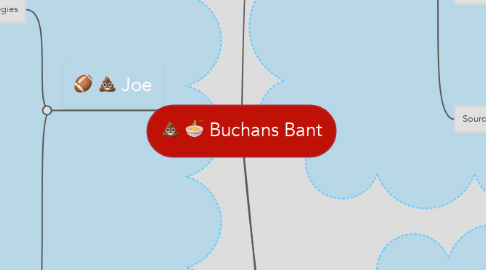
1. Joe
1.1. Pricing strategies
1.1.1. Cost plus pricing
1.1.1.1. Cost plus pricing is a cost-based method for setting the prices of goods and services. Under this approach, you add together the direct material cost, direct labor cost, and overhead costs for a product, and add to it a markup percentage (to create a profit margin) in order to derive the price of the product
1.1.2. Penetration pricing
1.1.2.1. Penetration pricing is the practice of initially setting a low price for one's goods or services, with the intent of increasing market share. The price may be set so low that the seller cannot earn a profit
1.1.3. phsychological pricing
1.1.3.1. Psychological pricing (also price ending, charm pricing) is a pricing/marketing strategy based on the theory that certain prices have a psychological impact. Retail prices are often expressed as "odd prices": a little less than a round number, e.g. $19.99 or £2.98
1.1.4. Competitive pricing
1.1.4.1. Competitive pricing is setting the price of a product or service based on what the competition is charging. Competitive pricing is used more often by businesses selling similar products, since services can vary from business to business while the attributes of a product remain similar
1.1.5. Loss leader
1.1.5.1. A loss leader is a product priced below cost-price in order to attract consumers into a shop or online store. The purpose of making a product a loss leader is to encourage customers to make further purchases of profitable goods while they are in the shop.
1.1.6. Predatory Pricing (this is illegal)
1.1.6.1. With predatory pricing, prices are deliberately set very low by a dominant competitor in the market in order to restrict or prevent competition. The price set might even be free, or lead to losses by the predator. Whatever the approach, predatory pricing is illegal under competition law.
1.1.7. Price skimming
1.1.7.1. Price skimming is a pricing strategy in which a marketer sets a relatively high price for a product or service at first, then lowers the price over time. It is a temporal version of price discrimination/yield management
1.2. Motivation Stratergies
1.2.1. Fringe benenfits
1.2.1.1. an extra benefit supplementing an employee's money wage or salary, for example a company car, private health care, etc
1.2.2. promotion
1.2.2.1. When you are given a higher role in the company
1.2.3. Good work environment
2. Luke Did nothing
3. George
3.1. Primary and Secondry research
3.1.1. Primary= They do the research them selfs
3.1.1.1. Advantages = They found out what they specifically need to know
3.1.1.2. Disadvantages= Takes time and sometimes money.
3.1.2. Secondary= They use other peoples research they have already done.
3.1.2.1. Advantages= Saves time and sometimes money.
3.1.2.2. Disadvantages= May not find out the information they specifically need
3.2. Financial terms
3.2.1. Revenue
3.2.1.1. Income, especially when of a company or organization and of a substantial nature.
3.2.2. Cost
3.2.2.1. (of an object or an action) require the payment of (a specified sum of money) before it can be acquired or done.
3.2.3. Profit
3.2.3.1. A financial gain, especially the difference between the amount earned and the amount spent in buying, operating, or producing something.
3.2.3.1.1. Calculate= Total revenue - total cost
3.3. Sources of finance
3.3.1. Internal sources
3.3.1.1. Retained profit
3.3.2. External sources
4. Olly
4.1. customer protection laws.
4.1.1. sales of good act 1979
4.1.1.1. Goods must be: as described by the seller of satisfactory quality, fit for purpose
4.1.2. customer protection act 1987
4.1.2.1. business cannot : Produce or supply unsafe good mislead the customer about the price of the product businesses are responsible for any damage that an unsafe product causes. local councils can seize these products.
4.1.3. Trade description act 1987
4.1.3.1. businesses cannot: Make misleading statements about products or service. make false statements about product and their effect
4.2. Finance
4.2.1. total revenue
4.2.1.1. total revenue= price x quantity if john fixes 15 computers a week at an average price of £100. his total revenue is: £100 (average price) x 15 (jobs) =£1,500 per week
4.2.2. Estimating cost
4.2.2.1. All business will have a number of different cost associated with running their business. Examples: rent is a fixed cost, the making of the product

